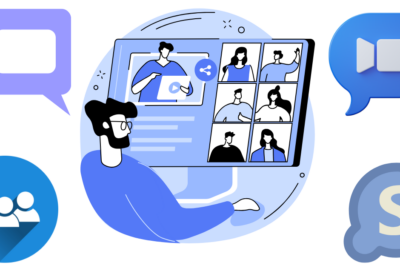How AI-Powered Ad Creatives Are Reshaping Advertising
In today’s digital age, where information overload is a daily challenge, advertisers face a big question: How do you make your message stand out in the crowd? In this blog, we’ll take you on a journey through the world of AI-powered ad creatives. We’ll learn how AI makes personalization easy, transforms data into insights, and creates engaging content that keeps audiences hooked.
AI isn’t a fancy term; it’s a game-changer for advertising. Picture this: Your marketing campaigns are personalized for each person, gaining insights to create ads that connect and adapt in real time to grab attention.
Join us as we uncover the magic of AI in advertising and see how it’s changing how brands connect with their audience. Let’s dive into the future of marketing!
What is AI-Powered Ad Creatives?
AI-powered ad creative refers to using artificial intelligence (AI) technologies to create, optimize, and enhance the content of advertisements. These advertisements can take various forms, including text, images, videos, and interactive elements.
Impacts of AI-powered Ad Creatives
Enhanced Personalization:
AI allows advertisers to create highly personalized ad campaigns by analyzing user data and preferences. This leads to more relevant and engaging advertisements, increasing the likelihood of conversion.
Improved Targeting:
AI helps advertisers target their ads to the right audience with precision. This reduces wasted ad spend on irrelevant viewers and maximizes the return on investment (ROI).
Cost Efficiency:
Automated ad creation and optimization processes reduce the time and resources required to manage advertising campaigns. This leads to cost savings for advertisers.
Creative Assistance:
AI can assist human creatives in generating content, providing suggestions, and optimizing visuals and copy for better performance. This collaboration between AI and human creatives enhances overall ad quality.
Real-time Optimization:
AI algorithms can continuously analyze ad performance and make real-time adjustments to maximize results. This ensures that ads are always at their most effective.
A/B Testing Automation:
AI automates A/B testing, allowing advertisers to identify the best-performing ad variations without manual effort quickly.
Cross-Channel Consistency:
AI-powered ad creatives help maintain brand consistency across various marketing channels, ensuring a cohesive customer experience.
Content Generation at Scale:
AI can generate vast amounts of content quickly and efficiently, making it easier to run large-scale ad campaigns across multiple platforms.
Improved User Experience:
Interactive ads and AI-powered chatbots enhance user engagement and satisfaction by providing immediate responses to user queries and guiding them through the purchasing process.
Data-Driven Insights:
AI analyzes vast amounts of data to provide valuable consumer behavior and preferences insights. Advertisers can use these insights to refine their ad strategies and product offerings.
Enhanced ROI:
By optimizing targeting, personalization, and content, AI-powered ad creatives help advertisers achieve a higher return on investment by increasing conversion rates and reducing ad spending on ineffective campaigns.
Competitive Advantage:
Companies that embrace AI-powered ad creatives gain a competitive edge by staying ahead of the curve in advertising technology and efficiency.
Scalability:
Advertisers can scale their campaigns more efficiently with AI, reaching a broader audience without a proportional increase in manual effort.
Ethical Considerations:
The use of AI in advertising also raises ethical concerns, particularly related to user data privacy, algorithm bias, and the potential for manipulative advertising practices. Advertisers must navigate these issues responsibly.
How Ai-Powered Ad Creatives Personalize Ads for Individuals
Data Collection:
AI-powered systems gather extensive data on individuals, including their online behavior, preferences, demographics, and historical interactions with ads and websites. This data is collected through various sources, such as website cookies, mobile apps, social media platforms, and more.
User Profiling:
AI algorithms use this data to create detailed user profiles. These profiles encompass a range of information, such as:
- Browsing history: The websites and pages individuals visit.
- Search history: The terms and topics individuals search for.
- Location: The geographic location of users.
- Device and platform: The type of device (e.g., smartphone, desktop) and platform (e.g., iOS, Android) individuals use.
Behavior Analysis:
AI systems analyze user behavior patterns to understand individual preferences and interests. For example:
- Content consumption: AI identifies the type of content users engage with, such as articles, videos, or products.
- Click-through rates: AI tracks which ads or links users are more likely to click on.
- Purchase history: AI identifies products or services users have previously bought or shown interest in.
Segmentation:
AI segments users into distinct groups or categories based on user profiling and behavior analysis. Each segment represents individuals with similar characteristics and interests. For instance:
- Users interested in fashion.
- Users are looking for technology products.
- Users who prefer local dining options.
Content Customization:
AI uses the generated user profiles and segments to tailor ad creatives to individual viewers. This personalization can manifest in several ways:
- Ad Copy: AI generates ad copy that speaks to each segment’s specific interests and needs. For example, showing sports enthusiasts sports-related products in the ad copy.
- Product Recommendations: AI recommends products or services based on a user’s past behavior or the behavior of similar users.
- Visuals: AI can select images or videos more likely to resonate with a particular segment.
- Pricing: In some cases, AI may adjust pricing or offers dynamically based on a user’s profile or behavior.
Real-time Optimization:
AI continually assesses how users interact with personalized ads. It adapts and optimizes ad creatives in real-time based on user responses. AI may prioritize similar content in subsequent ads if a user interacts positively with certain content.
Feedback Loop:
User interactions, such as clicks, conversions, and engagement, are fed back into the AI system to refine user profiles and improve personalization over time.
How to Harness the Power of AI-Powered Ad Creatives
Understand Your Goals:
Begin by defining clear and measurable advertising goals Is it your goal to raise awareness of your company, expand your customer base, or improve sales? Your objectives will shape your AI strategy.
Data Collection and Integration:
Ensure you have access to comprehensive and high-quality data. AI relies on data for insights and decision-making. Integrate data sources from various touchpoints, such as website analytics, CRM systems, and ad platforms.
Choose the Right AI-Powered Tools and Platforms:
Research and select AI-powered advertising tools and platforms that align with your goals and budget. Popular options include Google Ads, Facebook Ads, and programmatic advertising platforms.
Audience Segmentation:
Use AI to divide your target audience into subgroups based on their characteristics and activities. You can target certain subsets of your target audience with your ad content for increased effectiveness.
Personalize Ad Content:
Leverage AI to personalize ad content, including ad copy, images, and product recommendations. Using user data, AI algorithms may craft highly personalized advertising environments.
Dynamic Creative Optimization (DCO):
Implement DCO techniques to automatically adjust ad creative elements (such as headlines, images, and calls to action) in real time based on user behavior and preferences.
A/B Testing and Experimentation:
Continuously test different ad variations and creative elements to identify what works best. AI can automate A/B testing and provide insights on which creative elements drive better results.
Budget Optimization:
Use AI-powered bidding strategies to optimize your ad spend. AI algorithms can adjust bids in real time to maximize the efficiency of your budget allocation.
Ad Performance Monitoring:
Regularly monitor the performance of your AI-powered ad campaigns. Track key metrics like click-through rates, conversion rates, and return on ad spend (ROAS).
Adapt and Refine:
Analyze the insights and data generated by AI to make informed adjustments to your ad creatives and strategies. Keep an open mind and adjust your strategy based on results.
Stay Informed:
Keep up with the latest advancements in AI and advertising. AI technologies evolve rapidly; staying informed about new features and tools can give you a competitive edge.
Compliance and Ethics:
Ensure your AI-powered ad creatives adhere to ethical standards and comply with data privacy regulations. Transparency in data usage and ad targeting is essential.
Training and Expertise:
Invest in training or hire experts who understand AI-powered advertising. A skilled team can make the most of AI tools and strategies.
Scale and Iterate:
As you see positive results, consider scaling your AI-powered advertising efforts to reach a larger audience. Continue to iterate and optimize your campaigns for ongoing success.
Conclusion
In conclusion, AI-powered ad creatives are like the superheroes of the advertising world, swooping in to save the day. They personalize ads just for you, create stunning visuals that catch your eye, and write copy that speaks your language.
With AI, advertisers can test, learn, and adapt in real-time, making their campaigns smarter and more cost-effective. But, like any superhero, AI comes with responsibilities. We must ensure it’s used ethically and respect our privacy.
The future of advertising is exciting, with AI leading the way. We can expect even more mind-blowing innovations as it evolves, reshaping how we see and interact with ads.




